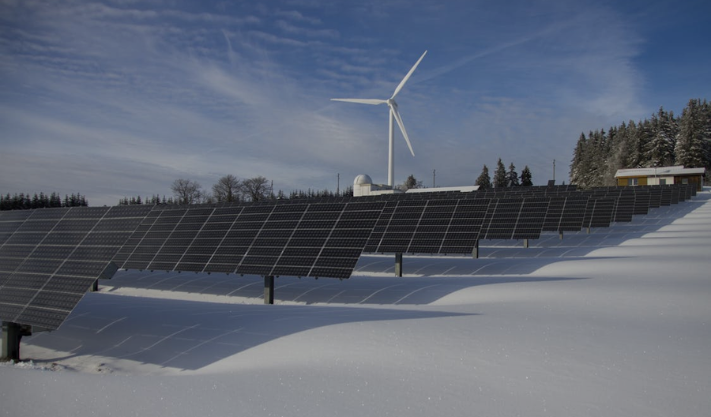The UK’s Green Energy Revolution: What’s Next in 2025?
As the world grapples with the urgent need to combat climate change, the United Kingdom has emerged as a leader in the green energy transition. Over the past decade, the UK has made significant strides towards reducing its carbon footprint and investing in renewable energy sources. With the country setting ambitious climate goals and committing to net-zero emissions by 2050, the focus now shifts to the next stage of the green energy revolution. As we approach 2025, what can we expect from the UK’s green energy future?
1. Expansion of Offshore Wind Power
One of the UK’s most remarkable achievements in the green energy sector has been its expansion of offshore wind power. The UK is home to the largest offshore wind farms in the world, and this sector continues to grow rapidly. By 2025, the UK is expected to have significantly increased its offshore wind capacity, with estimates suggesting it could produce up to 40 gigawatts (GW) of power annually, enough to power every home in the country. This growth is driven by a combination of favorable government policies, technological advancements, and substantial private sector investment.
Offshore wind farms have proven to be an incredibly effective source of renewable energy due to the consistency and strength of winds at sea. Moreover, as technology advances, the cost of offshore wind power continues to decrease, making it increasingly competitive with traditional fossil fuel sources.
2. Solar Power and Energy Storage Innovations
Although the UK’s weather is often associated with clouds and rain, solar power has seen impressive growth in recent years. By 2025, solar energy is expected to contribute a significant share of the country’s energy mix. The UK’s increasing solar capacity will be complemented by innovations in energy storage technology, allowing for the capture and storage of excess energy produced during sunny days.
Energy storage technologies, such as lithium-ion batteries and emerging solid-state batteries, will play a crucial role in smoothing out the intermittent nature of renewable energy. These innovations will allow solar power to be harnessed even when the sun isn’t shining, making solar a more reliable and integral part of the energy grid.
3. Hydrogen as a Game-Changer
Hydrogen energy has been touted as a potential game-changer for the UK’s energy sector, and by 2025, it is expected to become a critical part of the nation’s green energy strategy. Hydrogen can be used in a variety of applications, from power generation to heating and transport, offering a clean alternative to natural gas and diesel.
The UK government has already started to invest in hydrogen infrastructure, particularly green hydrogen, which is produced using renewable electricity. Hydrogen has the potential to decarbonize industries that are difficult to electrify, such as heavy industry and long-distance transport. By 2025, the UK is likely to have made significant progress in scaling up hydrogen production and integrating it into the energy system.
4. Decentralized Energy Systems and Smart Grids
The UK’s energy system is transitioning from a centralized model, where power is generated by large, fossil-fuel plants, to a more decentralized system that relies on smaller, renewable energy sources. By 2025, we can expect to see an increased reliance on community-based energy systems, such as solar panels on residential roofs, small wind turbines, and local battery storage.
Smart grids will play an essential role in managing this transition. These grids use digital technology to monitor and manage energy usage more efficiently, balancing supply and demand in real-time. The development of smart grids will allow the UK to make better use of renewable energy and reduce waste, ensuring that homes and businesses have a stable, reliable power supply.
5. Energy Efficiency in Homes and Industry
The drive for green energy is not only about producing cleaner electricity but also about using energy more efficiently. By 2025, the UK will see a significant increase in energy-efficient homes and industrial processes. Government-backed initiatives, such as the Green Homes Grant, will support homeowners in making their properties more energy-efficient, reducing the demand for energy from the grid.
In industry, energy efficiency improvements will be driven by the adoption of advanced technologies like heat pumps, LED lighting, and better insulation materials. These measures will not only reduce emissions but also lower energy bills for businesses and individuals.
Conclusion
As the UK continues to push forward with its green energy revolution, 2025 will mark a pivotal moment in the country’s journey toward net-zero emissions. With advancements in offshore wind, solar power, hydrogen energy, smart grids, and energy efficiency, the UK is well on track to become a global leader in sustainable energy. The next few years will be critical in accelerating the green energy transition and proving that a cleaner, greener future is possible for all.
Published: 27th May 2025
For more article like this please follow our social media Twitter, Linkedin & Instagram
Also Read:
Why men lose muscle in middle age – and how to stop it
UK Economic Outlook 2025: Growth, Stagnation, or Recession?
UK Housing Market 2025: Boom or Bust?























